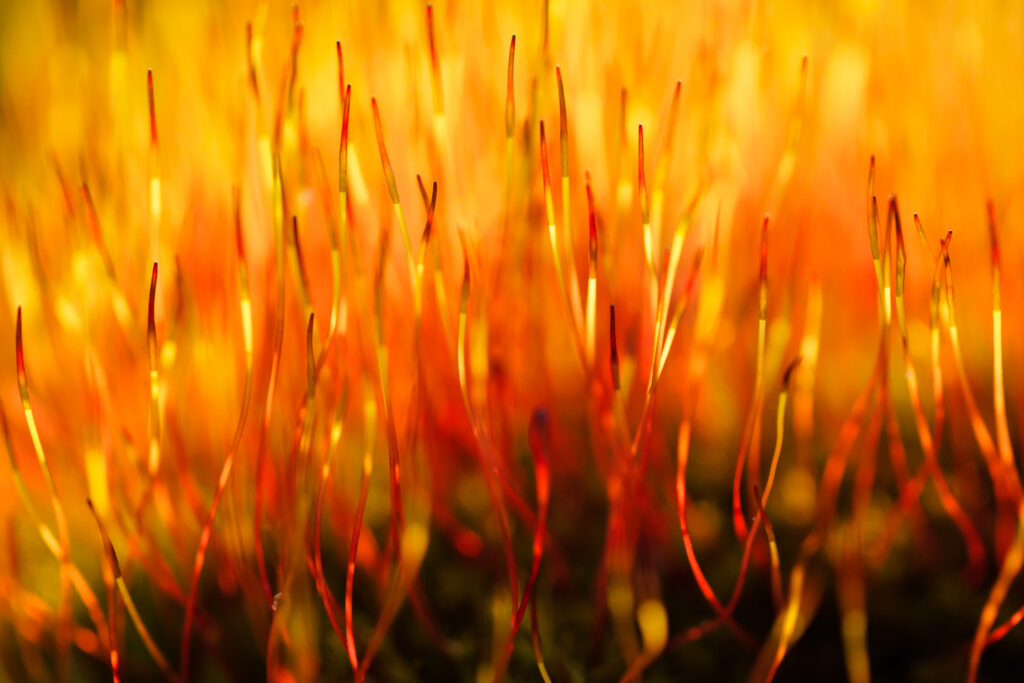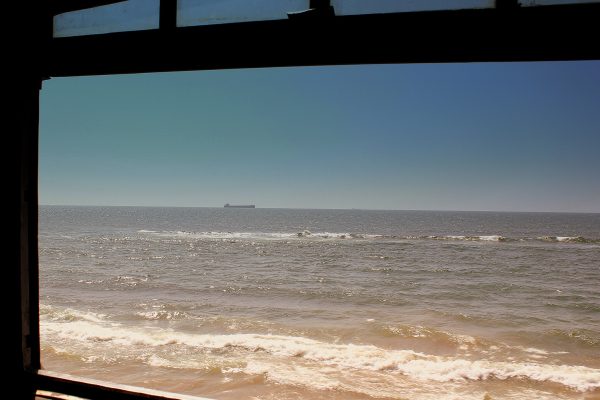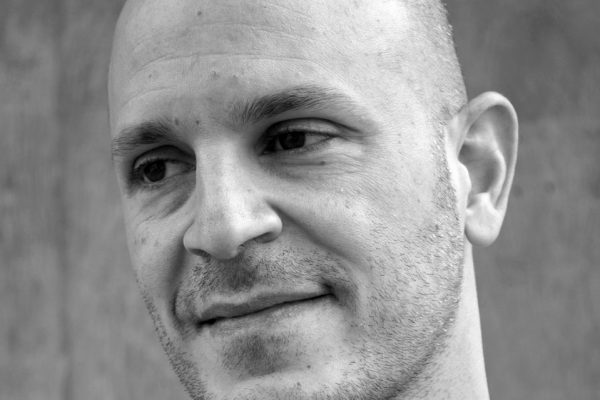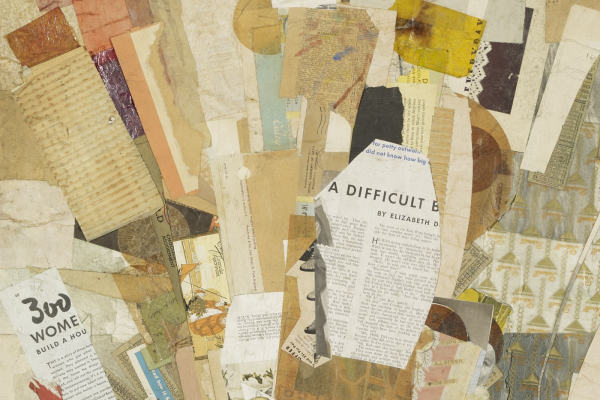Brenda Hillman
Extra Hidden Life, Among the Days
Wesleyan University Press, $24.95
The most significant fissures in our planet are the consequence of shifting tectonic plates, continents drifting apart centimeter by centimeter over billions of years. Extra Hidden Life, Among the Days, Brenda Hillman’s tenth collection of poems, reminds us that even Earth’s tiniest cracks host a traumatic history and usher in an ongoing process of unknowable beauty. Although our habitats and lives are threatened by environmental catastrophe, although our national foundations are cracked, there is life nevertheless transforming in the cracks. Extra Hidden Life is Hillman’s most obscure and most inviting collection to date, her most ecstatic (a tall order after an epic of the elements) and her most dire. It is a book of nature in hospice, but it is also a testament to love’s seismic capacity for connection in the wake of personal loss and collective crisis.
Earth invigorates what we destroy, and in a poetics of disintegration and revolt, Hillman follows suit. The cracks themselves become part of the form and part of the meaning. Planting human grief in geological time, she innovates the elegiac, beckoning other species and weaving their polyphonies into a cosmic web. Shifting margins, sonic play, and letters suspended between words formally decompose the poems. The disruptive white space is as much death as breath, as much foothold as float. Spelling itself becomes a spell: “the edge of the self / is the f.” (14) The word set free from human use is magic. Many of the poems open in the middle of a thought or action with a shorthand of human urgency: “—kept losing self control / but how could one lose the self / after reading so much literary theory.” (19) Yet as the poems rove through peripheral life and micro-activity, they sprawl and rip away from human time. There is a static electricity here that is meant to provoke shocking connection. We build up charge as we go.
Hillman’s previous collection, Seasonal Works with Letters on Fire, which won the International Griffin Prize in 2014, provides secret instructions for this subsequent collection: “Sit down with the gray-green world / where a world will write itself, go on— / you were not there when it began; / it can go on without you.” (92) Her obsessions have not changed—existence in the face of extinction, activism and pacifism, perception and spiritual passage. What has shifted radically is the scale: the tinier the organism the deeper we may dive in time. As the Trump administration aggravates our political and environmental emergency, we must paradoxically zoom in to the microscopic to locate awe:
Sometimes , when I’mvery tired , I thinkof extremophiles , chemolithoautotrophs& others with power for changingnot-life into lives , of those that eat rock& fire in volcanoes , before the deathof the world but after the death of a human (22)
Note the internal margin physically crevicing the poem, the dangling comma between tectonic half-lines, a pause that implies an ending before the end. Extra Hidden Life gives language and voice to our microorganisms—the creatures that exist among life, death, and not-life, between the human and non-human.
If Hillman’s oeuvre up to this point has been a lyric-epic of consciousness opening from the ego to the ecopoetic, Extra Hidden Life performs an analysis of the collective unconscious embedded in the life underneath life, which she sometimes refers to throughout as “wood mind.” (5) The first poem “On a Day in the World” opens on the edge of a hill, “as if / humans were extra / or already gone;—.” (3) When our voices come closest to being silenced, Hillman puts our ear directly to the ground. In her most virtuosic book yet, she teaches us to eavesdrop on the liminal. There are no minor voices. From meditations on time as an element of grief to protest poems in prose, a poem diary to a concluding pair of elegies and odes, Hillman rescues the sublime from the subliminal. For Hillman, catastrophe is an opportunity to probe the surface of existence: “meaning gathers in the doublesunder,” a place literally composed of layering (doubles) and splitting (sunder). (68) Invoking an image of a man doubling over his wound as well as the activity deep beneath the topsoil, this brilliant portmanteau exposes the central subject of Extra Hidden Life: the unconscious of Earth.
We are living in a traumatic moment, and the unconscious feeds off trauma. It invigorates what we don’t take the time to examine: “In the aftermath of the overwhelm / ~we~ hope to stay awake.” (64) We access the unconscious by making associations between what we see and what we long for, what we remember and what we imagine. These web-like networks are most astonishing and effective in the elegies and odes, the final two sections of the collection. The extended elegy for C.D. Wright, “Her Presence Will Live Beyond Progress” is a masterpiece of the posthumous voice. We don’t need poetry to know that the dead literally replenish the earth, but in Hillman’s “ecotone of the beyond,” the dust to dust experience becomes transcendent: “Where are you being everything now? / –sort of particular speckles all around.” (121, 130) Wright’s accented wisdom echoes through the poem and through Earth’s collectively animated body, through memory and geyser energy, fabric and sandstorm, particle and poem, a rhizomatic network of radical love:
i cling to her like a burr on a sock
cling to her like a lipstick stain
cling like lichen on the live oak breaking things downextra hidden life among the years (129)
This is an elegy of sustenance and symbiosis. Wright’s voice in absentia becomes a compass back to her mineral presence. Absorbing her friend’s tongue-in-cheek perspective, Hillman writes posthumous dialogue with refreshing self-awareness: “what seems to be the problem I ask her into the emptiness // –I can’t buckle my fucking invisibility suit.” (131) The elegy is a disembodying occasion for which Hillman constructs a new brand of immortality with surprising moments of levity. This is how the personal becomes planetary.
In addition to private loss, Extra Hidden Life weaves the most distressing current events through the soil and substrata of our vibrating ecosystem. Across the collection, Fred Moten and Stefano Harney’s concept of the undercommons, “a kind of break piece between locating and dislocating ourselves” in the university, becomes a place within and outside the Anthropocene. Hillman uses the term to link her interest in the voice and place of the racially marginalized with the power dynamics of our planet’s marginal systems. For Hillman, the roots of trees and lichen on rock are the undercommons of earth, where we humans can “be together in brokenness” within the invisible networks of nature.
With references to Blake and Baraka, Rosa Parks and Roza Luxemberg, Judith Butler and Jesus, Extra Hidden Life takes on capitalist corruption, gun violence, racial tension, police brutality, and die-ins—without losing sight of the microbiome. In Hillman’s hands, a die-in becomes a tableau vivant of decomposition. Jefferson’s haunted house and garden become the physical meeting ground for our atrocious past and shattered future. In one relentlessly enjambed sentence, Hillman conjures both the spirits of slaves and the microbes in Jefferson’s garden to bear witness to the evils of today:
Now far far down in Jefferson’s garden – – inrungs & rungs of fixed dirt the united snakes &embryonic spirits push breathinto pollen puffs abovefinely ridged carrots and onions I/I/I/I/I/I/I/Iconnecting the ideal through their roots – –pushing miraculous periscopes out of earth,past the fungal layer of powdery nonDeist soil,quite dependent spirits all over the place – – (52)
The United States is overrun by “united snakes,” but whereas snakes in the garden traditionally signify evil, now they are the innocents, the freest spirits of all. The annihilated subjectivities of slaves rise up with the defiance of root vegetables, proliferating pillars of I’s penetrating the text’s surface. This is the invisible revolution, American ideals of freedom and prosperity forcing their way within, and despite, a history of human horrors.
If Whitman fathered American poetry by telling us to seek the self under his bootsoles, in Extra Hidden Life, Hillman mothers a post-American poetry in which the I is just the All underground. Here the lyric self is deliberately elusive; a single cell of bark contains a polyphonic world. In her global grief, Hillman could easily have given us the grimmest forest, a fairytale in which the children don’t quite survive. Instead we get a taxonomy of overlooked beauty: “Some people think lichen looks dead but it is alive in its/ dismantling…/…Anything so radical & ordinary stands for something.” (56) With frequent swerves from the scene of a protest to a magnified fungus, Hillman masters the time lapse. In “Triple Moments of Light & Industry,” a line from Dante invades an oil refinery protest, illuminating a paradise of ecstatic bugs in the hell of human greed:
“tiny slave bacteria changing sulfides, ammonia, hydrocarbons & phenol into levels of toxin the mixture can tolerate, & then we consider how early tired stars gave way to carbon molecules a short time after the start of time…” (45)
Through the grotesque companionship of bugs and oil, Hillman forges a trauma-bond between Earth and humanity. The run-on time of the prose lines puts us in sudden awe of the toxic alchemy from molecule to cosmos and back. Extra Hidden Life is less a call to action than a transmutation from human to geological time.
What thrives beside what is vanishing? In a prose poem on saudades, a notoriously difficult to translate Brazilian form of longing, Hillman writes “the visible stands for everything including the invisible.” (33) Crossing the lyric-epic realms of Jorie Graham or C.D. Wright herself, the poems in Extra Hidden Life, scattered with photos, read like a scrapbook that belongs as much to California as to the universe, as much to Hillman as humanity. The middle section of the book is devoted to a daybook of twenty-four poems called “Metaphor & Simile,” the last of which concludes “Is & as… / the world in all its forms—.” (94) Some of these journal poems look messy, but they are hoarding forms, a practice of mindfulness in which accretion replaces placidity: “A simile / grows like the skin of the soul / if it were safe to grow outside & live….” (61) Hillman’s lines afflict at first with the abundant oppression of an oil spill. It takes slippage to achieve a moment of glisten—reading these poems requires getting lost. Punctuation conducts the emotion of a poem. Diagrams of symbols and non-linguistic sounds perform ritual communication with other organisms. Rows of tildes speak to lichen. A series of colons surrounding “aw aw aw” moves us to experience the subjectivity of a crow. In one of the most moving moments of punctuation, from the ode for a national forest, Hillman inverts the pathetic fallacy:
The trees went //////////// & they went\\\\\\ They couldn't make upTheir minds YYYYYYYYYYYYYBut the writing of the bugs & the humansWas evidence that everything existsThe worse things went for the humansThe better things went for the bugs (148)
Instead of nature reacting to human emotions, Hillman modifies language to express the thoughts of trees: the letter Y awakens a forest in wonder. What looks like chaos is consciousness.
Ecologist and magician David Abram has written of those who are able to grieve Earth while recognizing the resuscitative powers of their grief: “…their eyes well with tears that fall easily to the ground. The soil needs this water. Grief is but a gate, and our tears a kind of key opening a place of wonder that’s been locked away.” Hillman is one of these gate-openers. If Extra Hidden Life is an elegy, it is still, like her elemental quartet, an ethical quest. At a glance, these poems may appear bleak, impenetrable—try making eye contact with a rock. What’s the difference between the soul and a mineral glitter? For Hillman there is no distinction between viscera and idea: The Earth doesn’t make a distinction. Hillman puts us in deep touch with (and trust of) the sensuous sounds and scripts of our least lovable creatures. In an era of presidential tweets and fake news, writing becomes a task of inter-species empathy: “for they love wood as I love paper, / pressing/ their whole jeweled bodies / in the beauty of the bark, dark bark, /sexy sexy sexy abstract beauty—.” (140) Note the insect sibilance of x’s, a blurring of description and participation. Through the language of beetles, we remember the physicality of poetry, an embodied but beyond-human music.
Making multiple mentions of anarchy, statelessness, and “the age of terror,” Extra Hidden Life is an event of compassion and subtle sass, the nevertheless of beauty in a state of shame: “We, the difficult daughters / hold these truths to be selflessly evident / as microbes on our nationless eyelids / await the arrival of the sun—.” (145, 52) Hillman has at last renovated American transcendentalism for the aftermath of America. The human is not saved by nature. We cannot overcome the damage we’ve done, but we can begin to revere the life we don’t even consider life—all that has been tucked away in the Anthropocene. This is the dark optimism of a wound that festers rather than heals, and Hillman’s speakers are microscopes with a pulse, reminding us that the infection itself is alive. In an elegy for her father, she writes: “…the sleek rabbit turns / its moist eye & enters the ground / where everything gathers after humans are gone—.” (106) We will go on losing life. Meanwhile, we must go on discovering more. In Extra Hidden Life, Among the Days, Hillman has paved the way for an ecological occult. What exists underneath Earth, and in the cracks, is not an underworld or an afterlife but extra life.








